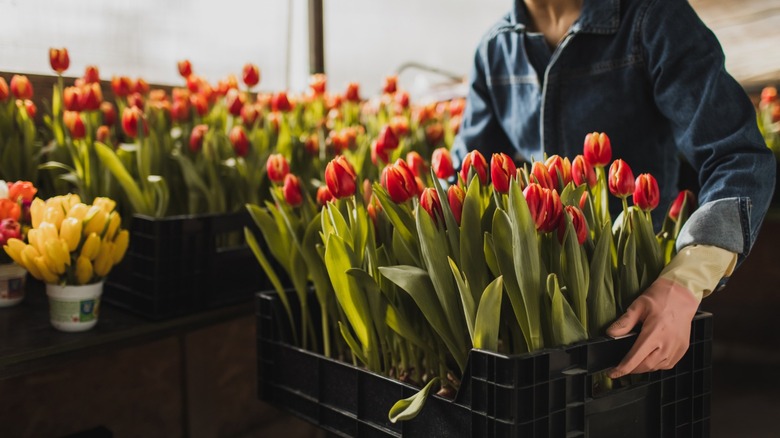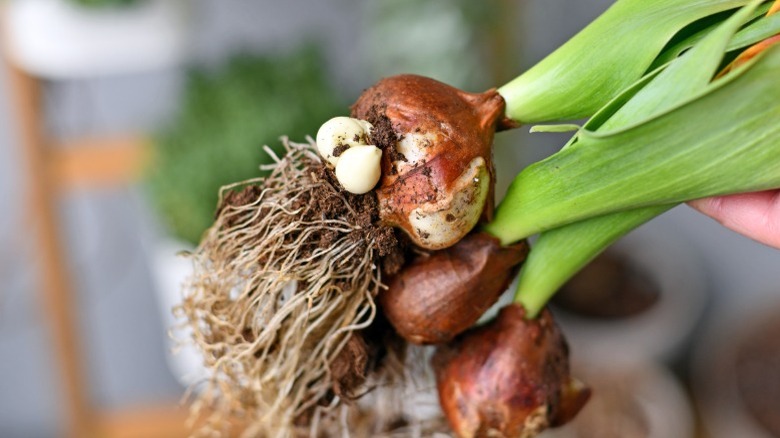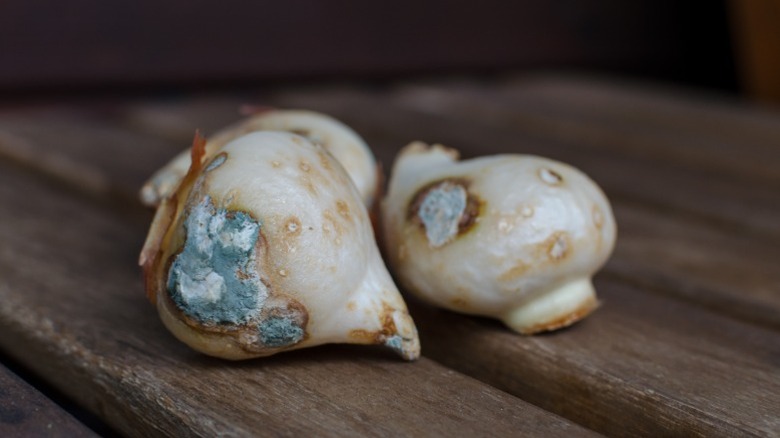Can Tulip Bulbs Multiply? Here's What Every Gardener Should Know
Flowers that grow from bulbs are some of the earliest blooms to grace a garden in the spring. It can be fun to plan a colorful design of tulip flowers, similar to the flower fields that are a popular attraction in the Netherlands. You might want to take advantage of the multiplying nature of the tulip bulb to make building your bulb garden easier. Instead of buying tulip bulbs to add each year, you could try to propagate more. But just because tulip bulbs can multiply, doesn't necessarily mean that it's a practical option for the average gardener.
A member of the lily family, tulips (Tulipa) originated in southern Europe to central Asia, but rose to legendary popularity thanks to the tulip mania that occurred in 17th century Netherlands. Nowadays, there are more than 100 species of tulips to choose from, with numerous shapes, colors, and sizes. Although classified as a perennial, tulips can be picky when it comes to growing conditions outside their native range. Some mistakes everyone makes when growing tulips in the garden include ignoring the bulbs after they are done blooming and not minding the correct growing conditions.
While tulips can be grown from seed, the most popular option for propagation is division. As they grow, tulip bulbs develop little bulblets or offsets. These tiny bulb children have the same characteristics as the parent plant. After a few seasons, or cycles, of growth, you should be able to dig up your tulip bulbs and separate these tinier clusters from the parent bulb.
Tips for multiplying and dividing tulips
Tulips grown under the proper conditions are the most likely to multiply naturally. Undue stress to the plant will not allow excess energy to go into supporting dependent bulblets. Additionally, your tulip plants usually do not begin producing offshoots until they've bloomed at least once. Plants require full sun and plenty of organic material in the soil. Avoid planting bulbs in areas where the soil will remain wet for long periods of time or you may end up with rotting or decaying bulbs instead of bulblets. Under the right conditions, parent bulbs can produce 2 to 5 offshoots each growing cycle.
It's also not ideal to dig up your tulip bulbs immediately after they are done blooming. Instead, wait until the foliage starts to die around early to mid-June. Knowing how and when to deadhead tulips is essential for this process, because removing the flower after its finished blooming allows for the plant to spend more energy on growing the baby bulbs. In large commercial production fields, like those found in the Netherlands, this process is done almost immediately after they bloom in May.
Common problems associated with multiplying tulips
Home gardeners may struggle with growing and multiplying tulips, especially if their climate conditions don't match with their native inclination. A major issue with multiplying baby bulbs from tulips is that you probably won't see blooms from them for at least a few years. It also takes at least three growing seasons before you have enough bulblets to separate from the parent bulb. A big reason why flower farmers might want to think twice before growing tulips is the amount of space they take up just to propagate more flowers.
It also takes a lot of energy for bulbs to produce offsets. This ultimately means that you might sacrifice a season without tulip blooms while you wait for them to multiply. And after you collect the offset bulbs from the parent bulb, that original bulb will likely be at the end of its life. Dividing your tulip bulbs every few seasons can help you replenish your bulbs and keep them healthy and not overcrowded.
An important part of multiplying tulip bulbs is protecting the bulbs for next year. While it's possible to leave the bulbs in the ground after blooming to let them grow larger, in commercial fields bulbs are removed and dried. Overwatering dormant bulbs can lead to rotting, which will ruin not only your baby offset bulbs but also the parent bulb.


